Born on the farm, raised in the pub.
1951. Harry Truman is President of the United States, Nat King Cole scores a worldwide hit with Unforgettable and Prince Baudouin takes the oath as King of Belgium. On 26 October of that same year, Raymonde Dedoncker and Gaston Debelder welcomed their first-born son on the family farm on the Mierenberg in Halle.
But the yield of the farm, which Gaston shared with his brother, could not provide enough for two families. So, in 1953, Gaston and Raymonde moved to the Hoogstraat in Beersel, to run a pub which would later become a restaurant: De 3 Fonteinen. Armand grew up among the regulars in the pub. In the cellar, he played among the barrels of lambic and the ageing bottles of geuze.
At lunch, we were served a glass with two fingers of lambic and three fingers of water, with a pinch of sugar. Coca-Cola was not allowed into our house.
From an early age, he could take a sip from a glass when Gaston was blending. He remembers this vividly. “It wasn't a case of ‘being allowed’, I just didn’t get the choice. At lunch, we were served a glass with two fingers of lambic and three fingers of water, with a pinch of sugar. We were raised with this. Coca-Cola was out of the question in our house, my parents insisted on that.” There had to be principles, indeed.
At school, Armand was not your model pupil. The confines of the system were too narrow a fit for him. “School was a punishment for me. I loved going there to see my classmates, but sitting on a bench and paying attention was not my thing. Let's just say I wasn’t particularly acing it in the classroom.” At around the age of 14, he was that type of kid who preferred chatting and playing to paying attention, so he was sent to the local cooking school in Anderlecht. “I got to choose for myself: the cooking school or the horticultural school. But I already knew my way around a pub and a kitchen, so that choice was quickly made.”
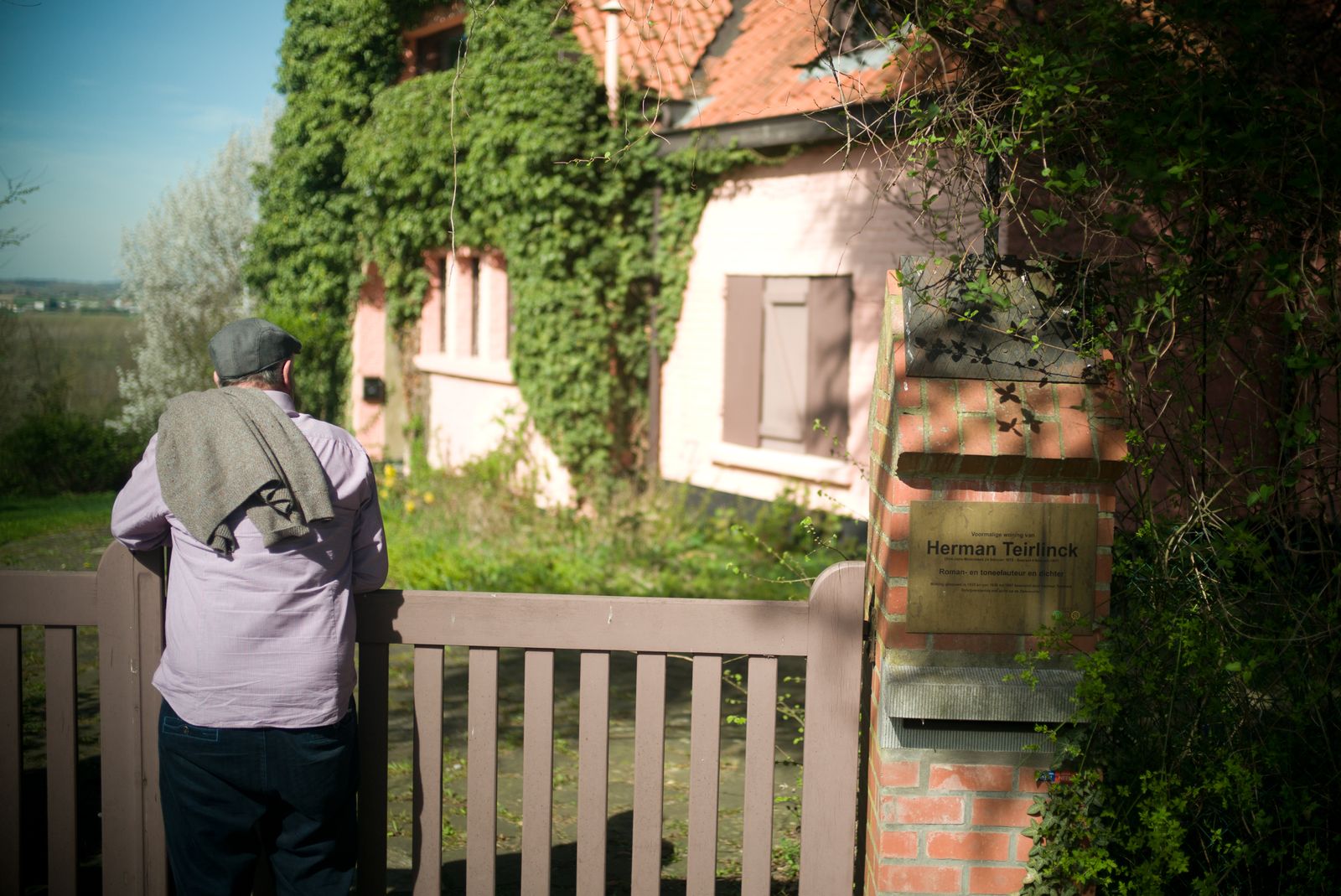
Armand’s third grandfather, Herman Teirlinck.
In the pub, Armand witnessed the energetic, loud and boisterous ‘mijol club’, named after the game in which the players threw discs into a hole or mijol (the mijol being a naughty word for the female sex). But pub sports was not the club’s raison d’être. It was all about fervent cultural and political discussions with the cream of the crop. For decades, the Drie Fonteinen pub was the meeting place of an array of notorious Belgian writers, politicians and artists such as Herman Teirlinck, Gerard Walschap, Marc Galle, Ernest Claes, Maurice Roelants, Libera Carlier, Marcel Poot and Felix De Boeck.
It was mostly the founder of the mijol club itself, Herman Teirlinck, who would make an indelible impression on the young Armand. The architect of Flemish cultural emancipation played an entirely different role for little Armand. “My earliest memory was when he took me to the Grasmarkt in Brussels for the feast of St. Nicholas, in his nice car, with his own driver. To the toy shop we went, where I was allowed to pick one toy. Then we went and had a coke. The only one of the year.”
There is only one way, the straight one. You have your opinion and you put it out there. If the others don't agree, you go and sit around the table.
“Herman Teirlinck — we had to call him Mr Teirlinck — was like a third grandfather to me. He helped shape my life. Sometimes people can pass thoughts on to you and inspire you. Of course it remains up to you to do something with that inspiration.” The conviction to fight for traditional lambic and geuze, for example. Armand attributes the fire with which he continues to do so to his third grandfather. That is why Brouwerij 3 Fonteinen only sells geuze in bottles and will not deviate from that rule. Teirlinck already made a categorisation in 1947, with the noblest of all beers at the top: the bottled geuze and fruit lambic beers.
And there is another saying that Brouwerij 3 Fonteinen upholds today, directly and always linked to Herman Teirlinck through Armand: “Yes, but... is no answer.” Armand explains what it means to him: “There is only one way, a straight one. You have your opinion and you put it out there. If the others don't agree, you go and sit around the table and you talk things through until you reach an agreement. It is not a good idea to leave unspoken matters unresolved. Otherwise, there will be trouble.”
Life in the kitchen and the cellar.
From the age of sixteen, Armand worked in the kitchen, in the dining room, but also in the cellars where the barrels were, and where Gaston was blending and bottling. You can bet it was hard work. “In the beginning I didn't like working in the cellar. I just did not get a choice. That's how it was in those days. We had to get up early and get to it. It was always cold and damp down there, and sometimes dangerous because bottles occasionally exploded in the bottling machine. My school holidays? They were spent bottling. Work, work, work.”
When he turned twenty-one, Armand started running the restaurant's kitchen. “Those were amazing times, at any given moment, four of us were pouring geuze, continuously, with two men to do the dishes. With additional people in the kitchen and some more in the dining room. When we started serving mussels, things went crazy straight away. In the summer, we easily moved five hundred kilos (1,100 pounds) of mussels on a Thursday and a Friday, and a ton of fries a week. And potatoes were still peeled by hand back then...”
In those years, Armand also developed a few classic dishes of his own, inspired by the region, such as the crowd favourites with Pajotter sauce (a cheese-based sauce). But the brett-microbe still ran through his veins, so it had to find its way. After Gaston and Raymonde passed on the flourishing restaurant to their two sons in the 1980s, Armand became convinced that there was also a bright future lying ahead for authentic geuze.
Armand, geuze blender.
But Gaston Debelder did not share his son’s conviction. In his dialect he declared: “Guis, da es allien nog voe d'aa peikes” or geuze is only for old geezers. These were strong words for someone who had spent half a lifetime blending. But indeed, in the 1990s, the popularity of authentic geuze and fruit lambic beers had reached an all-time low. The decline had already started several decades prior, due to the general sweetening of consumers’ taste and the higher purchasing power—going hand in hand with an increased consumption of wine.
That was the moment where Armand Debelder became a pioneer again. “They called me ‘den Armand’, the fool of Beersel, who still believed so passionately in geuze. At that time, we were one of the only ones left. I remember my dad telling us that in 1953, when we moved out of the farm, there were fourteen geuze blenders. Fourteen, in the village of Beersel alone! At the end of the eighties we also considered quitting blending, because the restaurant in itself was doing really well.”
And yet, Armand stubbornly continued to make beer. Why? “Something happened that I can't explain but it happened. Full stop. I was just part of a whole chain in the tradition. I did not do it alone. Was it Teirlinck? That surely must have been an important factor. Was it my upbringing? Was it the stubbornness inherent to my region or my Flemishness? I have no answer to that.” But he did go for it, against all odds.
At that time, we were one of the only ones left. They called me ‘den Armand, the fool of Beersel’, who still believed so passionately in geuze.
In 1993, he received the recognition he deserved. Together with two other blenders, Jean Hanssens and Jos Moriau, Armand received the trophy of the Objectieve Bierproevers (objective beer tasters), the predecessor of the current Zythos. For him, it was an important incentive, a confirmation of the value of the authentic geuze blending craft. “That is the only time I saw my father in tears. He then said to me, for the first time, that he had been told by some notables in 1953 that he would fail, being a newcomer in Beersel.”
In 1997, Armand founded the High Council for Artisanal Lambic Beers (HORAL). Its aim was to further safeguard, perpetuate and promote the tradition, craftsmanship and history of lambic and geuze. Armand would remain chairman until 2015.
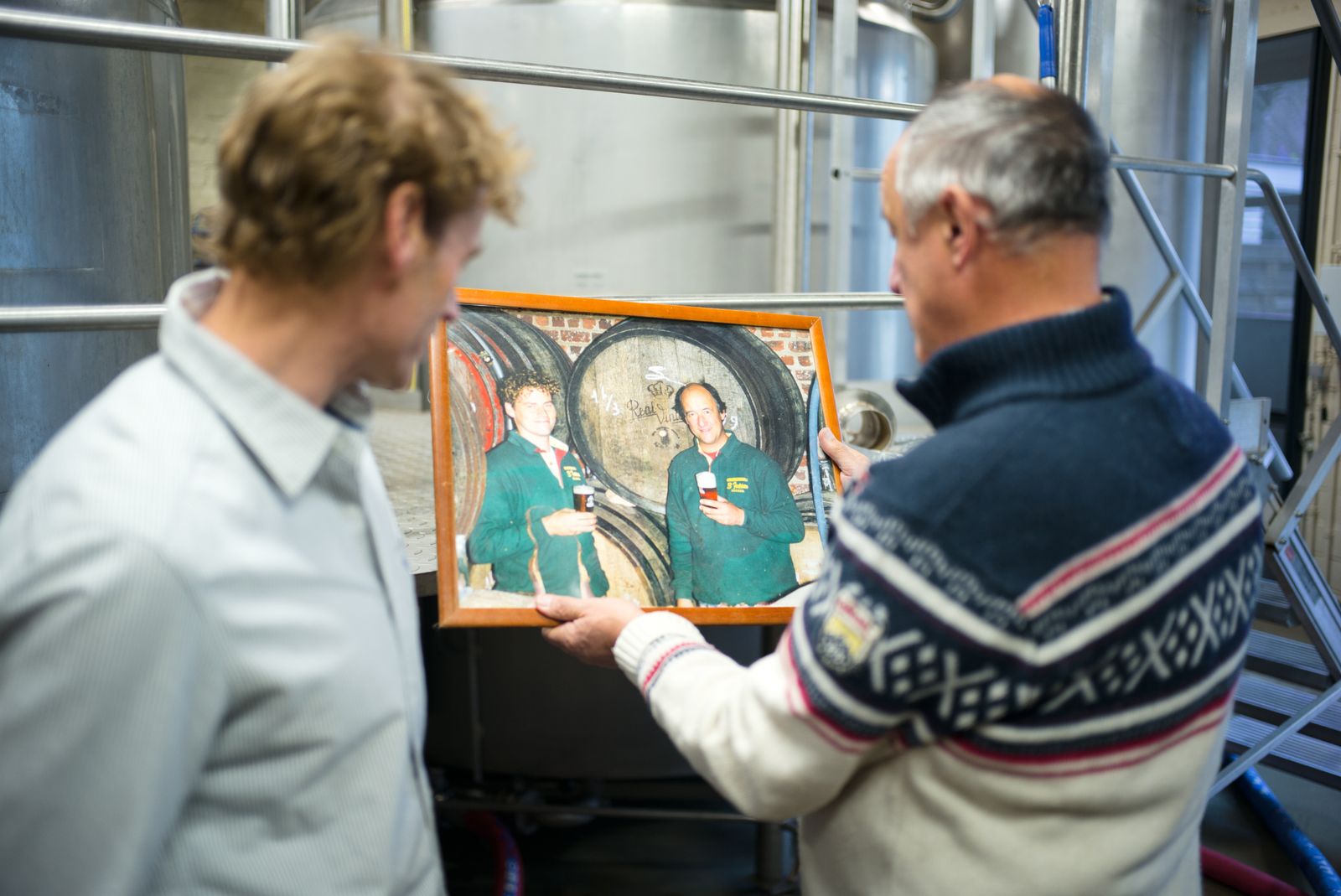
The birth of Brouwerij 3 Fonteinen.
In 1998, Armand installed a small second-hand brewing setup and got going. “I grew up with geuze and knew the ins and outs of blending, but I still had to learn how to brew lambic myself.” He did so together with Willem Van Herreweghen, at that time the owner of De Cam in Gooik. Willem’s blending operation would later be taken over by Karel Goddeau, another familiar face at the brewery, also to become a close friend of Armand’s.
The decision to purchase a brewery was not well received by the family. Discussions flared up, as it was a serious investment to make for a beer with such a small fanbase. Still, encouraged by his conviction, and after twenty-eight years in the kitchen, Armand decided in 2001 to focus only on brewing lambic and blending geuze. He set up his own company, which continues to this day as Brouwerij 3 Fonteinen.
Whenever the kriek lambic beer did not flow from the barrel, or something had gone wrong again, I would holler in rage and turn to my father: ‘Just tell me what to do, help me!’
In 2003, when the worst days for geuze were over, the liberating words of founding father Gaston Debelder finally came. Armand can still hear them today. “You must never change one single thing again, he said. It is the only compliment I ever received from my father. I should tell you, my father and I, that has never been easy. It was a typical father-son relationship. A real Flemish one. So you can imagine how special that moment was. From then on, I started calling myself a brewer.”
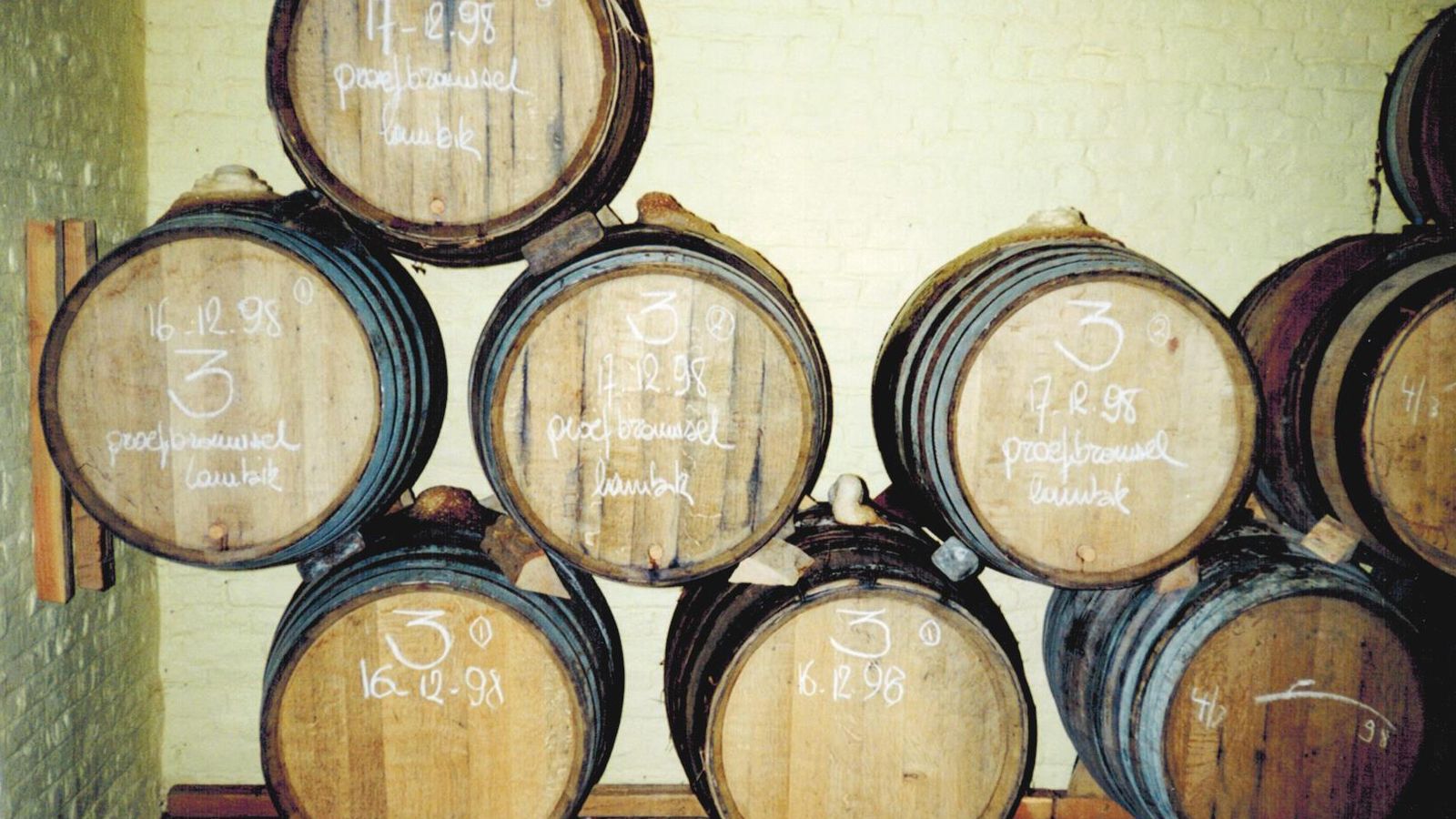
Even after Gaston's death in 2005, Armand still regularly recalled the hard years of learning the craft. “Whenever the kriek lambic did not come off the barrel, or something had gone wrong again, I would holler in rage in the warehouse and turn to my father: ‘Just tell me what to do, help me!’” He experienced first-hand that a steadfast belief in quality and economic rationale do not always go hand in hand. “It has not been good for my wallet. I am not a textbook example of how to run a business, either. Every year I was putting my own money into the business. In the end, the bank didn't want to finance it any more.”
And then the thermostat disaster still had to happen...
The years after the disaster.
On the morning of 16 May 2009, Armand steps into the warehouse. A sudden wave of heat overwhelms him and he hears one pop after another. A faulty thermostat had caused the room to heat up and the pressure on the bottles had become so great that they were exploding one by one. “I’m bankrupt. That was the first and only thing I could think of. We lost 80,000 bottles in one night, of which more than 25,000 had already exploded. Just after the disaster, I was one big lump of frustration. Why me? Why now?”
Fortunately, Armand could count on his former wife and some close friends to pull him through. He found his breath again to carry on. Brouwerij 3 Fonteinen got out of the slump by selling the brewing installation, by creating the eau-de-vie Armand’Spirit and by bottling a small but popular batch of geuzes (the Armand’4 series) that he blended from the lambics that were still in barrels and thus spared from the disaster.
There were people who said to me: ‘But you have Michaël.’ And that is where it dawned on me.
Which brings us to March 2010. Armand had just gained enough financial margin for a half-time employee. Then Michaël Blancquaert walked into the Beersel brewery yard—and into the story of Brouwerij 3 Fonteinen as we know it today. During his first days on the job, when he was helping to bottle the Armand’4, Michaël turned out to be quite receptive to the art of blending. And as it happened, he had the nose for it as well. “He learnt to taste very well, very quickly. Well, you cannot go without that in a lambic brewery and for geuze blending.”
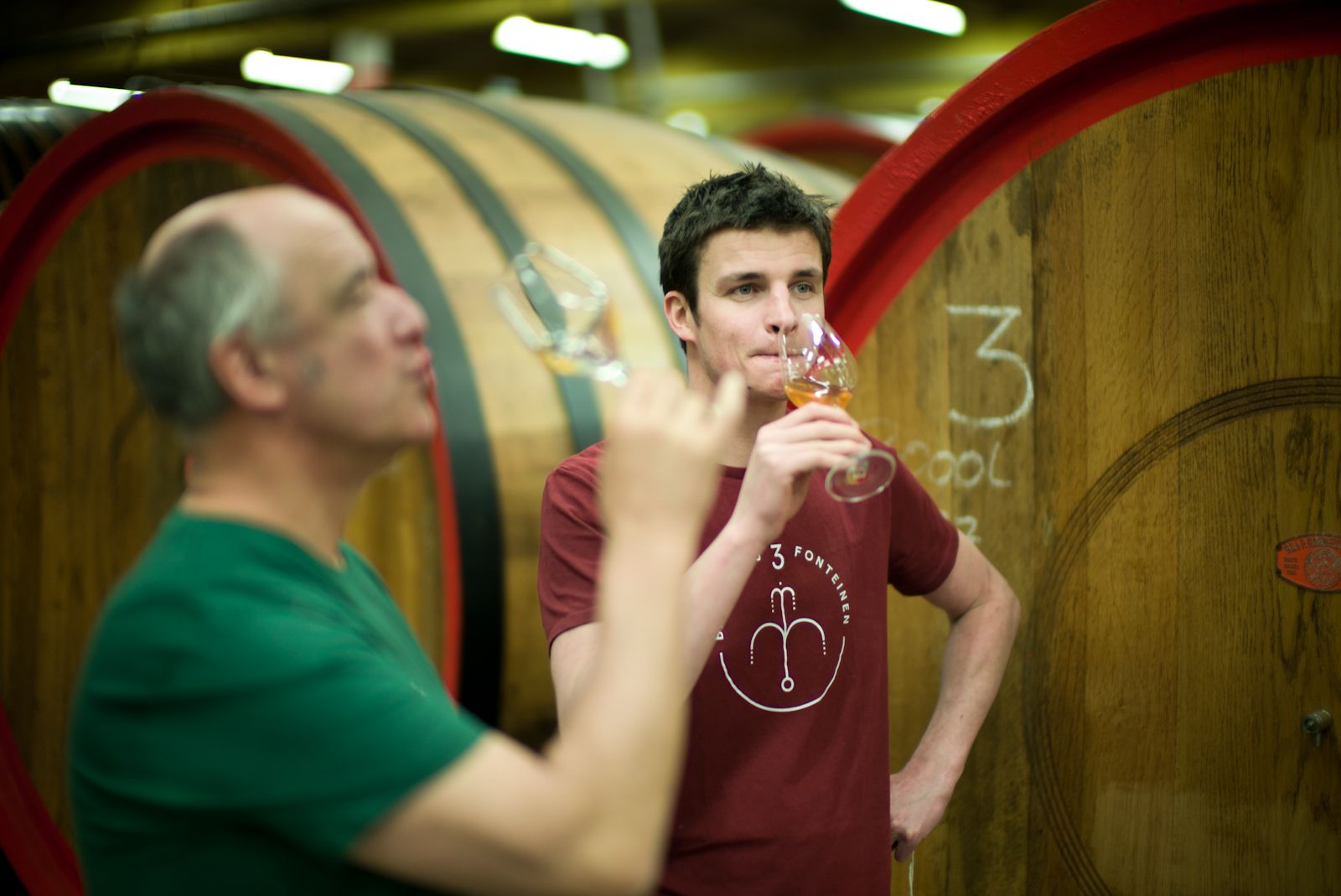
After a few months of working together, Armand increasingly saw the young version of himself in Mich. Friends and fellow brewers also noticed the close collaboration. “There were people who said to me: ‘But you have Michaël.’ And that is where it dawned on me and I realised that I was not getting any younger. What’s more, Mich is the son I never had. The bond we share, his personality...” It was enough for Armand to offer him a full-time job and a part of the shares in 3 Fonteinen.
Armand and the new generation.
Two years later, in 2012, they decided to put in a new brewing installation. And then, gradually, the plan took hold to centralise the (then still four) different locations. At that point, Werner Van Obberghen joined the table. “Werner had known 3 Fonteinen for a long time, but he also understood what we wanted to do. He knew the values we held high, and he was able to convey that to the bank.” In the weeks and months that followed, Michaël and Werner intensively worked together to write a business plan.
Well, as they say, ‘Le vieux est toujours là.’ Of course I still have my opinion about everything. Then it's up to them to act upon it, or not.
When Armand walked in on a Sunday and saw the two of them talking and writing in the brewhouse, he said: “I like what I’m seeing right now.” For the newcomers, the words would continue to reverberate to this day. Armand still made all the important decisions together with them, but he was also ready to share his life's work. “I don't have to intervene too much anymore. The engine is turning, and the two of them get along. I don't understand much of what Werner does anyway, all of that is his thing. And Mich has to manage his barrels now. It’s not up to me anymore.”
“But well, as they say, ‘Le vieux est toujours là.’ Of course I still have my opinion about everything. Then it's up to them to act upon it, or not.” Just as Gaston remained the guide for Armand, Armand remains the guide for 3 Fonteinen. “They are now experiencing what I went through before. Today, they have to do the hard work, but everyone wants to see me. It was no different back in the day. Everyone wanted a chat with my dad, but I was the one working.”
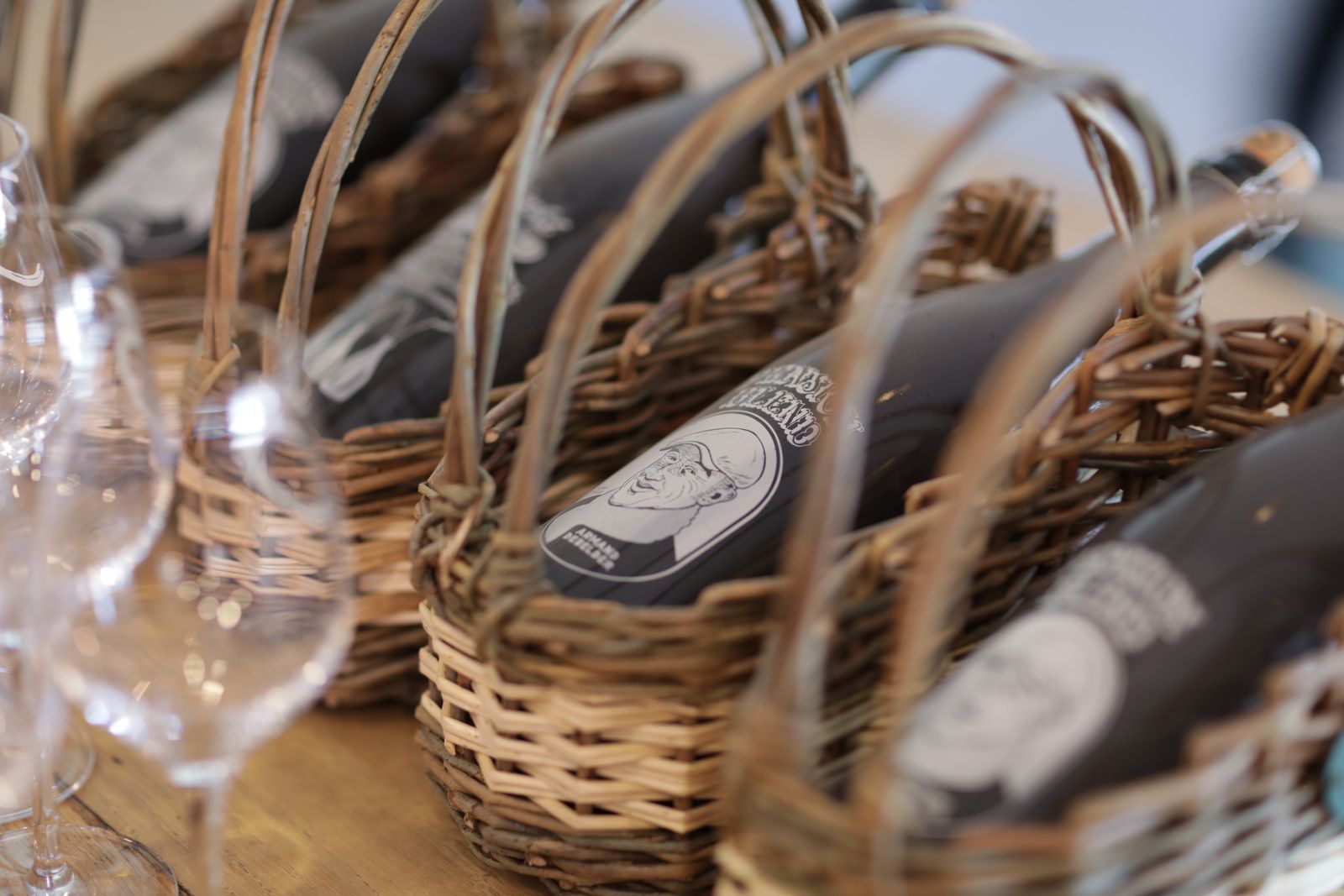
In October 2016, Armand officially retired. What he didn’t know is that a few months prior, he and Michaël had selected the lambics for his own ‘Pension Blend’. With his 65th birthday, he received them as the brewery team’s gift. “That was a major surprise. I suddenly noticed a strange bottle in our storage room. I was already taking a deep breath to give them hell—because you don't put other people’s bottles in our caveau—until I saw that there was a cartoon of me on the label. It was one of the best moments of my life.”
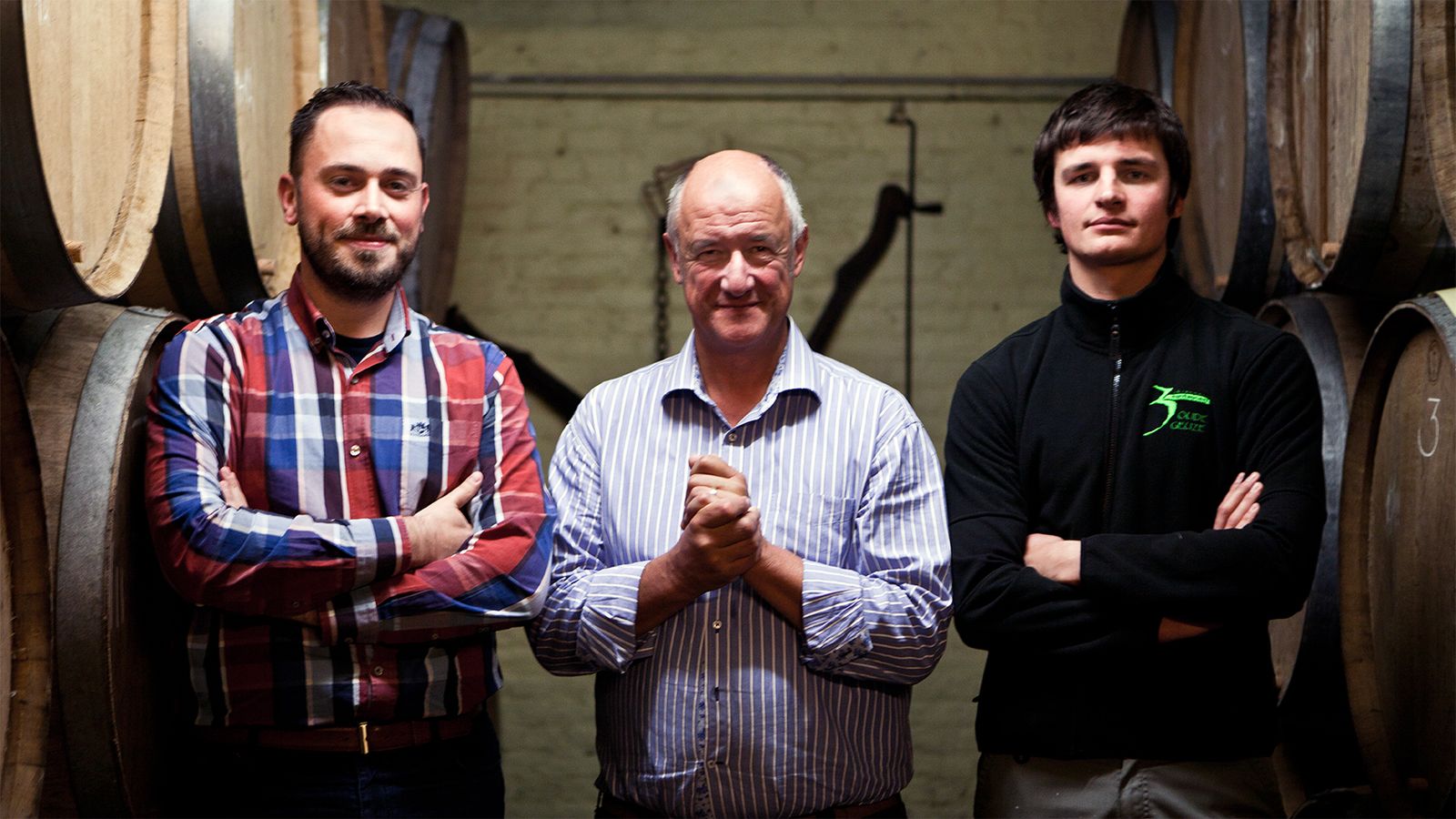
Grandpa Geuze.
In 2017, Armand revealed his vision for the future for Brouwerij 3 Fonteinen, without even realising it. He slammed his fist on the table and declared to return to the terroir, to local cereals and the region’s own Schaarbeek sour cherries. “We have to set our standard. In what we do, in the quality, in the values. The beer prohibits things and demands things. We must listen to it. And above all: we should get into our own backyard again.”
For the sour cherries, at that time, Brouwerij 3 Fonteinen was already developing a local network with families who picked cherries from the trees in their gardens. But when it came to barley and wheat, the story was more complicated. The industrial agriculture of the last decades had left no trace of the Kleine Rosse van Brabant and the other traditional landraces. But the hard way is also a way. By now, the brewery’s Cereal Collective has become a fact as well.
At the beginning of 2018, Armand was adamant about the future plans that were in full swing: “It's done. This is the icing on the cake that I prepared so long ago. Now it's up to the next generation. Everything has been arranged. Our stories match, I feel good about it and I feel at ease about where we're going.” The new team members are now his ‘rascals’, and their children call him Opa (Grandpa) Geuze.
But when he said this in 2018, fate was not yet done with him...
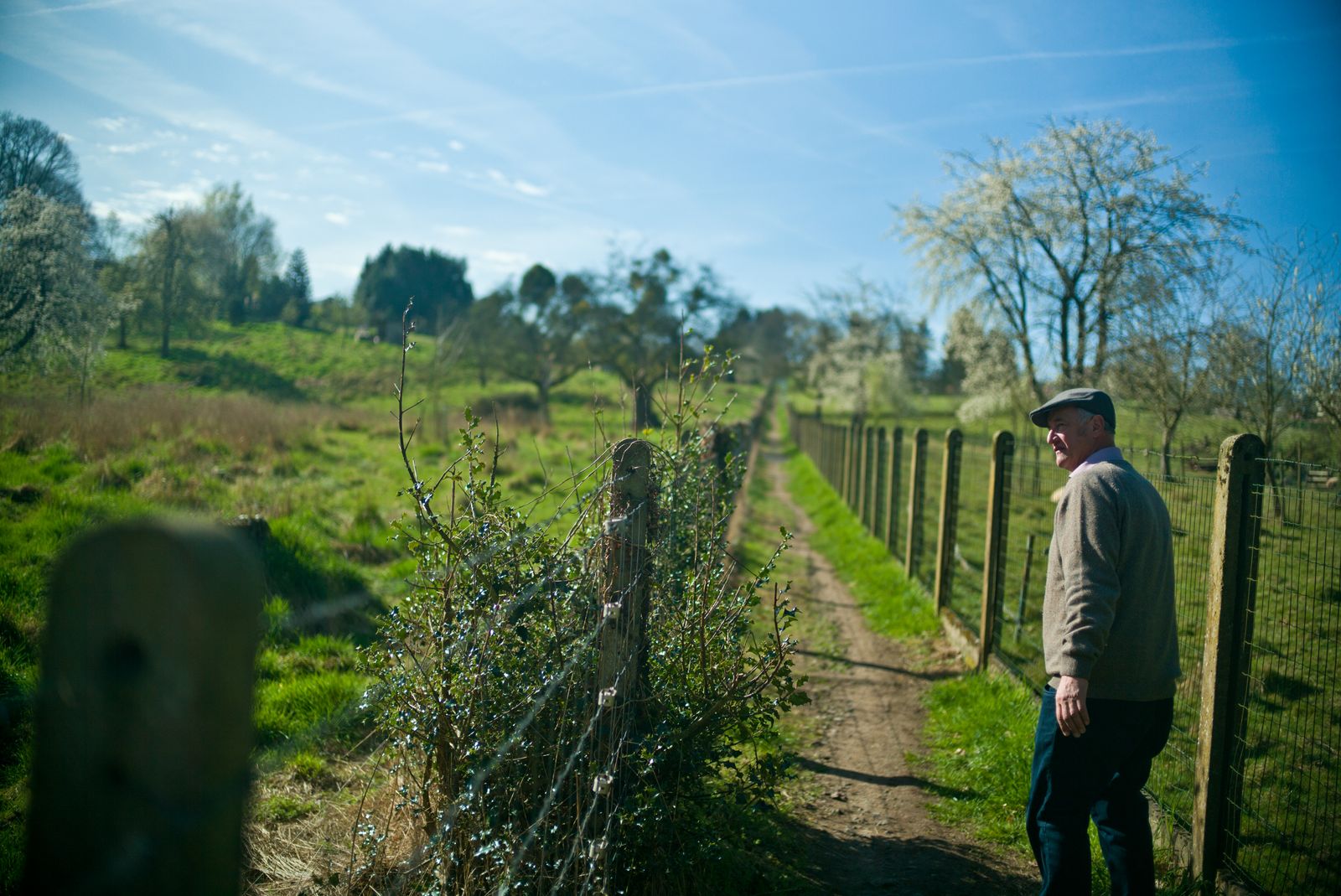
When he was about to enjoy his well-earned retirement—his house at the coast just being finished—fate’s hammer struck again. After several months of back pain, Armand received the verdict of a metastatic cancer. It was enough to make him decide, in the spring of 2019, to sell his share in 3 Fonteinen to his successors. “I want to safeguard the future of 3 Fonteinen to the fullest, in case something would happen to me.” The impact of the treatment was so harsh that he ended up in hospital in June 2019, physically exhausted.
Just tell it like it is. Pity is no cure.
Then, on and off, Armand gets back on his feet. He goes back and forth between the care centre and his home by the sea. And as long as he still can, he comes back to make his rounds in Lot. Whenever we ask him if we should tell anything about his illness, he is adamant: “Just tell it like it is. I don't need compassion, pity is no cure.”
The brewery, the barrel room, the conversations with the visitors, walking among the barrels, that is what he will have to miss in the end. But Armand Debelder does not make much time for contemplation. In short, he says: “That’s the way it is.”
Equally so, not a day goes by where Armand’s passion and stubbornness do not play a part in the choices that Brouwerij 3 Fonteinen makes. In the brewing, in the blending, in the tasting: he is always present. That’s the way it is, and that’s the way it will always be.
And all of a sudden, time stands still. After fighting for over three years, Armand passes away on March 6th, 2022. As it behooved Armand, a grand tribute is organised while he left his team the greatest surprise; an abundant flood of spontaneous condolences and stories from around the world. Despite the emptiness that Armands passing leaves, the fire to continue his life’s work is complete. And that is how not a day goes by where Armand’s passion and stubbornness do not play a part in the choices that Brouwerij 3 Fonteinen makes. In the brewing, in the blending, in the tasting: he is always present. That’s the way it is, and that’s the way it will always be.